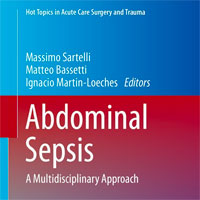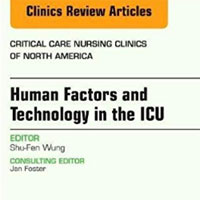Tag: hemodynamics
Hemodynamic Monitoring: Invasive and Noninvasive Clinical Application
Praised by nursing students for its straightforward language and readability, this interdisciplinary reference on bedside hemodynamic monitoring covers the technical aspects of clinical monitoring, including diagnostic and... read more

Transient Systolic Anterior Motion with Junctional Rhythm After Mitral Valve Repair in the ICU
This case report shows that junctional rhythm can cause deterioration of SAM, LVOTO, and MR, and can lead to unstable hemodynamics in a patient with right ventricular failure after MVR. Atrial pacing can resolve SAM, LVOTO,... read more
Assessment of the adequacy of oxygen delivery
In this article, we review physiologic principles of global oxygen delivery, and discuss the bedside approach to assessing the adequacy of oxygen delivery in critically ill patients. Although there have been technological... read more
Surviving Refractory Out-of-Hospital Ventricular Fibrillation Cardiac Arrest
Multi-system organ failure is ubiquitous but treatable with adequate hemodynamic support. Neurologic recovery was prolonged requiring delayed prognostication. Immediate 24/7 availability of surgical and medical specialty... read more
Abdominal Sepsis: A Multidisciplinary Approach
Recently released, Abdominal Sepsis examines in detail the topic of sepsis, with a focus on intra-abdominal sepsis. Particular attention is devoted to source control in the management of the infection, antimicrobial therapy... read more

Positive End-expiratory Pressure and Mechanical Power
Less than 7 cm H2O positive end-expiratory pressure reduced atelectrauma encountered at zero end-expiratory pressure. Above a defined power threshold, sustained positive end-expiratory pressure contributed to potentially... read more
When Does an Effusion Become Pericardial Tamponade?
Pericardial tamponade occurs when fluid within the pericardial sac impairs filling of the right-sided chambers, leading to a decrease in cardiac output and hemodynamic compromise. It is neither a clinical nor an echocardiographic... read more
Hemodynamic Consequences of Severe Lactic Acidosis in Shock States
Deleterious hemodynamic effects of severe lactic acidosis are largely suggested by experimental data, although not fully confirmed by human studies. Pending the effectiveness of an etiological treatment, there is no efficient... read more
Natriuretic Peptides: A Role in Early Septic Acute Kidney Injury?
Acute kidney injury (AKI) is a common complication of critical illness and is associated with significant morbidity, mortality, and financial cost. Sepsis is the leading association of acute kidney injury in the intensive... read more
Technology in the ICU, An Issue of Critical Care Nursing Clinics of North America
Dr. Wung is addressing an important component of critical care nursing: the role of technology in patient care. She has assembled top authors to provide current clinical information in the following areas: Sensory overload... read more

Effect of Decompressive Laparotomy on Organ Function in Patients with Abdominal Compartment Syndrome
Decompressive laparotomy has been advised as potential treatment for abdominal compartment syndrome (ACS) when medical management fails; yet, the effect on parameters of organ function differs markedly in the published literature.... read more
Hemodynamic Support of Pediatric and Neonatal Septic Shock
Margaret Parker, MD, MCCM, speaks with Joseph A. Carcillo, MD, about the article, "American College of Critical Care Medicine Clinical Practice Parameters for Hemodynamic Support of Pediatric and Neonatal Septic Shock," published... read more
Diagnostic Workup, Etiologies and Management of Acute Right Ventricular Failure
Right Ventricular (RV) function evaluation is key in the critically-ill patients for hemodynamic management, as fluid optimization, vasopressor strategy and respiratory support. RV failure may be diagnosed by the association... read more
Hemodynamic Response After Rapid Sequence Induction With Ketamine in Out-of-Hospital Patients at Risk of Shock as Defined by the Shock Index
After ketamine induction, high shock index patients exhibited blunted hypertensive responses and more frequent hypotension, whereas low shock index patients had sustained increases in pulse rate and SBP. One hundred twelve... read more
Advances in Critical Care Management of Patients Undergoing Cardiac Surgery
Cardiac surgery has been evolving to include minimally invasive, hybrid and transcatheter techniques. Increas‑ing patient age and medical complexity means that critical care management needs to adapt and evolve. Recent... read more
Left Ventricular Unloading During Veno-Arterial ECMO
Veno-arterial extracorporeal membrane oxygenation (VA ECMO) is widely used in cardiogenic shock. It provides systemic perfusion, but left ventricular (LV) unloading is suboptimal. Using a closed-loop, real-time computer model... read more
Prevention of Low Cardiac Output Syndrome After Pediatric Cardiac Surgery
Dobutamine and milrinone are safe, well tolerated, and equally effective in prevention of low cardiac output syndrome after pediatric cardiac surgery. The hemodynamic response of the two drugs is comparable. In uncomplicated... read more
Choosing the Right Hemodynamic Platform
Choosing the Right Hemodynamic Platform: ABG, SV to PAC – Barbara McLean, MN, RN, CCNS-BC, NP-BC Barbara McLean, MN, RN, CCNS-BC, NP-BC Critical Care Clinical Specialist Critical Care Division Grady Health System... read more
Arterial Line Placement
Approximately eight million arterial lines are placed in the United States yearly. The main indication for arterial line placement is the need for close hemodynamic monitoring. The second-to-second blood pressure variations... read more
R.E.B.E.L. EM – Fluid Responsiveness and the Six Guiding Principles of Fluid Resuscitation
Fluid resuscitation is a crucial aspect of emergency and critical care. Since the advent of the concept of early goal-directed therapy, we have placed a huge emphasis on aggressive fluid resuscitation in patients with severe... read more
Advanced Hemodynamic and Cardiopulmonary Ultrasound for Critically Ill Patients
Focused echocardiography, advanced hemodynamic, and cardiopulmonary point-of-care ultrasound studies provide time-sensitive evaluation of critically ill patients, guiding and facilitating earlier implementation of life-preserving... read more
Sodium Lactate Improves Hemodynamics
Sodium lactate has been shown to improve hemodynamics and avoid fluid overload. The objective of this study was to confirm a beneficial effect on fluid balance with sodium lactate infusion and to specify whether the advantage... read more









